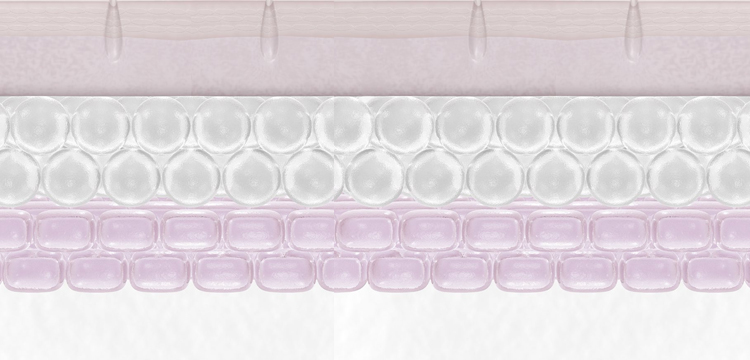What are they?
Glycosphingolipids are the main form of glycolipids in animal tissues.
Glycolipids – (from the Greek glycos – sweet and lipos – fat) are complex lipids that are formed as a result of the combination of alcohols, fatty acids and carbohydrates. Glycolipids are widely represented in tissues, especially in nervous tissue, in brain tissues. Together with phospholipids, glycolipids are part of cell membranes (their outer lipid layer).
Glycosphingolipids as a class of glycolipids are based on ceramide – this is a combination of the amino alcohol sphingosine with a long chain fatty acid. This ceramide backbone is linked by a β-glycosidic bond to complex glycans. In general, the structures of glycosphingolipids are diverse:
- due to variations in the structure of the glycan core: there are more than 400 glycan residues using 12 different saccharides unrelated or associated with 19 other saccharide units. The most common carbohydrates in glycosphingolipids are: glucose, galactose, N-acetylglucosamine, N-acetylgalactosamine, sialic acid.
- due to variations in the ceramide structure: the fatty acid attached to sphingosine can have the length of a carbon chain from
C14 to C24 and vary in degree of saturation and/or hydroxylation.
This combined structure forms an amphiphilic molecule with a hydrophilic carbohydrate area (polar head) and a hydrophobic lipid area (non-polar tail, fatty acid residues). The hydrophobic part is built into the lipid bilayer of cell membranes, and the carbohydrate part comes out.
The simplest representatives of glycosphingolipids are the so-called cerebrosides: glucosylceramide (glucocerebroside; ClcCer) and galactosylceramide (galactocerebroside; GalCer).
Galactosylceramides are the main glycosphingolipids in brain tissues and exist in all nervous tissues.
Glucosylceramide is a main component of skin lipids, where it is needed for the formation of lamellar bodies in the stratum corneum and for maintaining the permeable skin barrier. Glucosylceramide is the only glycosphingolipid common to plants, fungi and animals.
Thus, from the point of view of cosmetology and dermatology, glucosylceramides are the most interesting. They are the main glycosphingolipids of the epidermis and are responsible for the healthy formation and look of the upper layers of the skin.
For what? (functions of glycosphingolipids)
Glygosphingolipids, as secondary components of cell membranes and membrane compartments, modulate various aspects of cell biology. In addition, they are associated with growth, cell differentiation, they affect apoptosis, cell proliferation, endocytosis, intracellular transport, cell migration and ageing.
Almost all glycosphingolipids are antigenically active, that is, they act as immunogens. Some glycosphingolipids act as cellular receptors for bacterial toxins and probably also for bacteria and viruses, endogenous extracellular molecules.
Glycosphingolipids are considered to provide protection against harsh extracellular environments such as low pH and destructive enzymes. They help cells interact with the extracellular matrix and other cells.
They easily integrate into the cell membrane, support the proper functioning of cells, have a high surface activity to protect the skin and support the antimicrobial resistance of the skin.
In a complex system of nerve impulses, glycosphingolipids act as signal molecules that help the cell identify and pass necessary substances through the membrane.
Glucosylceramides of plant origin can significantly restore and strengthen the skin barrier, improve hydration channels in the skin, eliminate factors that cause signs of skin sensitivity, dryness, and dullness.
Studies prove the role of glucosylceramide as an obligatory precursor of ceramide (ceramide), necessary for the formation of the stratum corneum of the skin. Glucosylceramide is synthesized, transported to the stratum corneum, and then subjected to enzymatic hydrolysis, which leads to the deposition of ceramides.
Ceramide is a key component of the outer layer of the skin and is responsible for maintaining the barrier function of the epidermis – a key defense against skin dehydration. The lack of these lipids can cause dryness, flaking, dermatitis, etc.
Glycosphingolipids also protect keratinocytes from oxidative damage by supporting their barrier function and the function of producing new proteins that help renew healthy skin cells.
Glycosphingolipids in skin care
Glycosphingolipids in cosmetic products are of biotechnological origin and are absolutely identical to the natural components of the epidermis.
As a result of biochemical reactions, glycosphingolipids:
- Form hydrophilic channels in the stratum corneum of the epidermis
- Increase membrane permeability for targeted active ingredients
- Stimulate the synthesis of their own ceramides
- Restore the lipid barrier of the skin
- Help to normalize skin pH
- Reduce the risk of the inflammatory reaction development
Glycosphingolipids contribute to the restructuring and strengthening of the barrier functions of the skin, and improve the adherence of corneocytes. They have a calming, healing, moisturising effect, and protect the skin from aggressive environmental influences.
Due to their benefits for skin cell renewal and their effect on keratinocyte transplantation, glycosphingolipids may help reduce signs of aging and post-acne scarring.
Also, glycosphingolipids are able to protect the skin from free radicals and photoaging. They act as antioxidants and are able to absorb UV rays. Of course, such natural protection will not replace products with SPF, but it will help reduce the negative impact of ultraviolet rays on the skin.
Thus, glycosphingolipids are molecular components in the epidermis and not only perform several important functions, including structural and signaling, but also provide cell adherence and intercellular interaction. So these useful lipids (fats) are essential for our skin, especially oily skin, as paradoxical as it may sound.
Pay attention to LIPID BALANCE LIGHT CREAM from ReNeo cosmetics: glycosphingolipids in combination with additional restorative and antimicrobial components are the ideal solution for people with oily skin.



